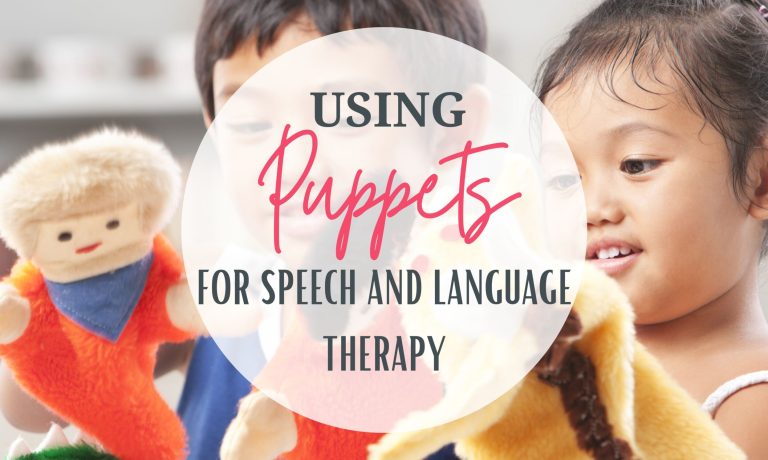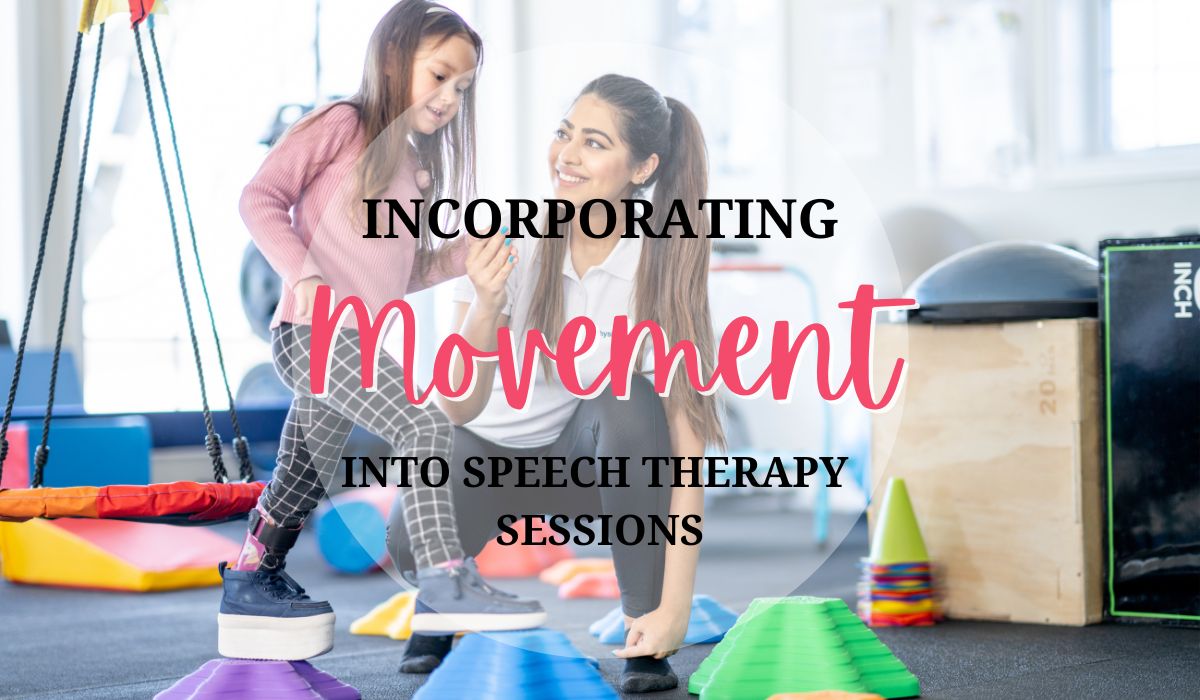When I worked in a preschool setting years ago (about me), I noticed right away how much the kids loved puppets. Our teachers used puppets to model social skills and the kids were mesmerized! Puppets can be a great tool for encouraging communication in young children. They can provide a safe and non-threatening way for children to practice social skills, develop language skills, and build relationships with others. This post is about the different ways that I have used puppets over the years. In addition, you will also learn how you can adapt a puppet to “swallow” speech cards and small objects!
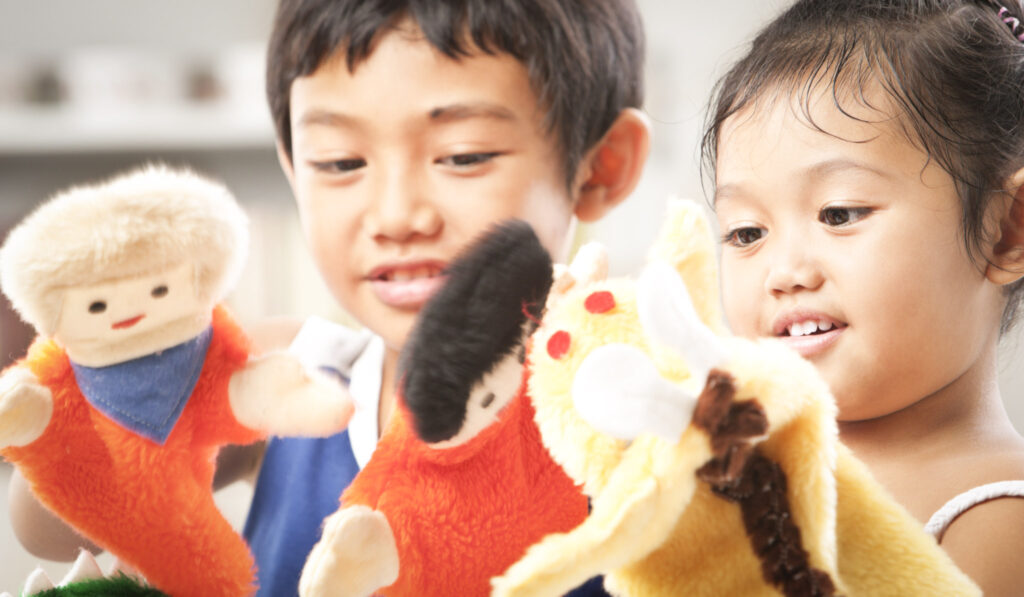
Play/Social Skills
Puppets can inspire children to use their imagination and creativity. Kids enter an imaginary world of pretend play when they have a puppet. Pretend play and communication really go hand in hand. Puppets really set the stage (literally and figuratively) for cooperative play when you have more than one child participating. There are so many natural opportunities for peer interaction and practicing social skills. Children have to communicate, collaborate and negotiate as they plan their puppet show. They can practice initiating, requesting, commenting, sharing and taking turns performing. Puppets provide a safe and non-threatening way for children to practice different social skills. By role-playing with puppets, children can practice social scenarios such as taking turns, sharing, and problem-solving.
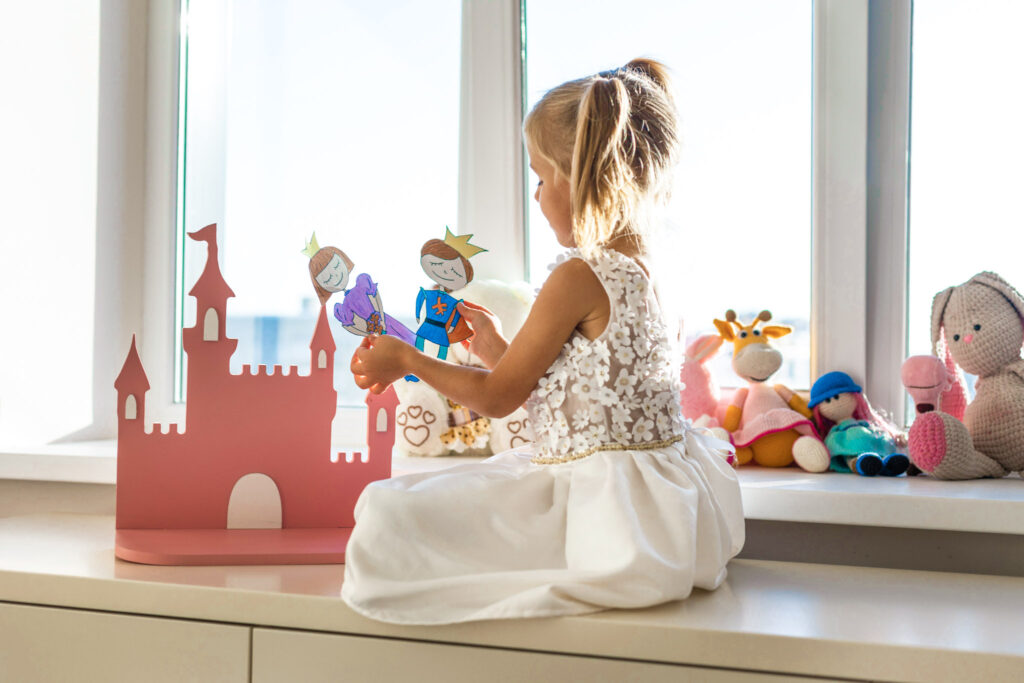
Narrative Language
One of my favorite goals to target is narrative language and puppets are the ideal prop! With a puppet in hand, your students can practice sequencing, making up their own stories, acting out stories, or retelling their old favorites. Sometimes we create a parallel story (or a “fractured fairy tale”) by changing the characters and/or the setting of a classic fairy tale. For example, “Goldilocks and the Three Bears” could become “Ellie and the Three Kittens”. You could even create paper puppets or paper bag puppets and send them home for extra practice.
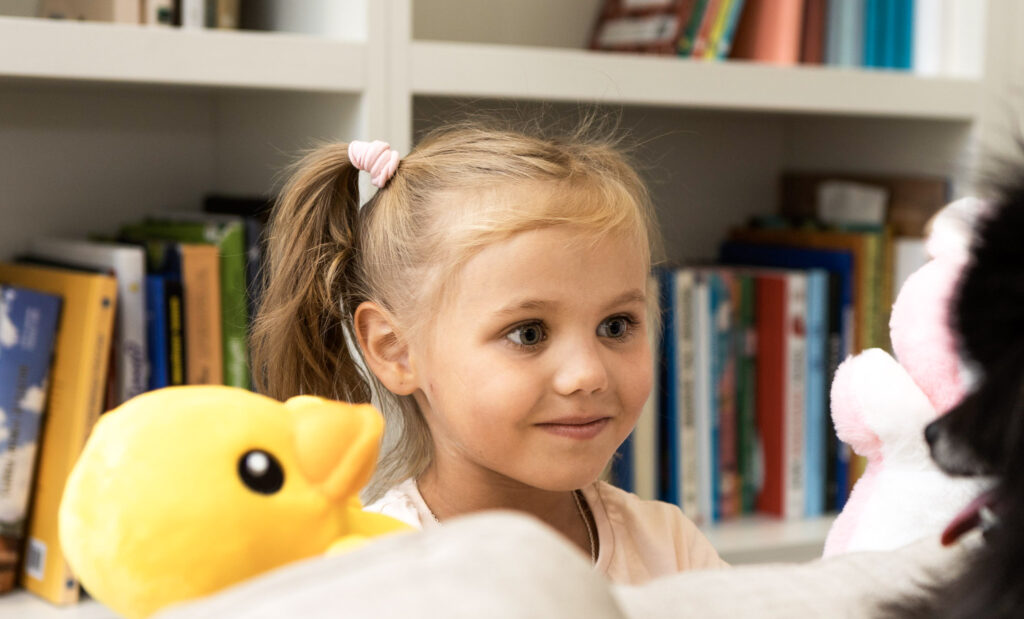
Other Targeted Skills
Kids are mesmerized when you pull out a puppet and you will have their full attention. Puppets can be used to encourage expressive language skills, such as speaking in complete sentences and using descriptive words. This is the perfect opportunity to model phrases that they are practicing with targeted grammatical markers or speech sounds. Sometimes I will tell them that they are “teaching the puppet” their speech words and have the puppet repeat after them. Children can practice just about any targeted speech or language skill with a puppet (voice volume, articulation, fluency, answering questions, vocabulary, grammar, etc). I love using puppets with my quietest students to take the pressure off speaking. I’ll never forget a student that I had years ago who had selective mutism. One of the first vocalizations that we heard from her in the speech room was making a puppet say “MMMMM”. She was more comfortable making the “puppet” speak and it was a big turning point for this little girl!

Feed the Puppet Reinforcer
Finally, I often use puppets to motivate my youngest learners and reinforce target behaviors. This is a fun way to entice them to practice their goals (e.g, speech sounds, vocabulary words, targeted sentence structures, etc). You can remove stitching in the puppet’s mouth to create puppets that can swallow speech cards and small objects!
Thank you for visiting my website! I hope you have been inspired by this blog post! How have you used puppets during your speech language therapy sessions? I would love to hear from you! Comment below!

